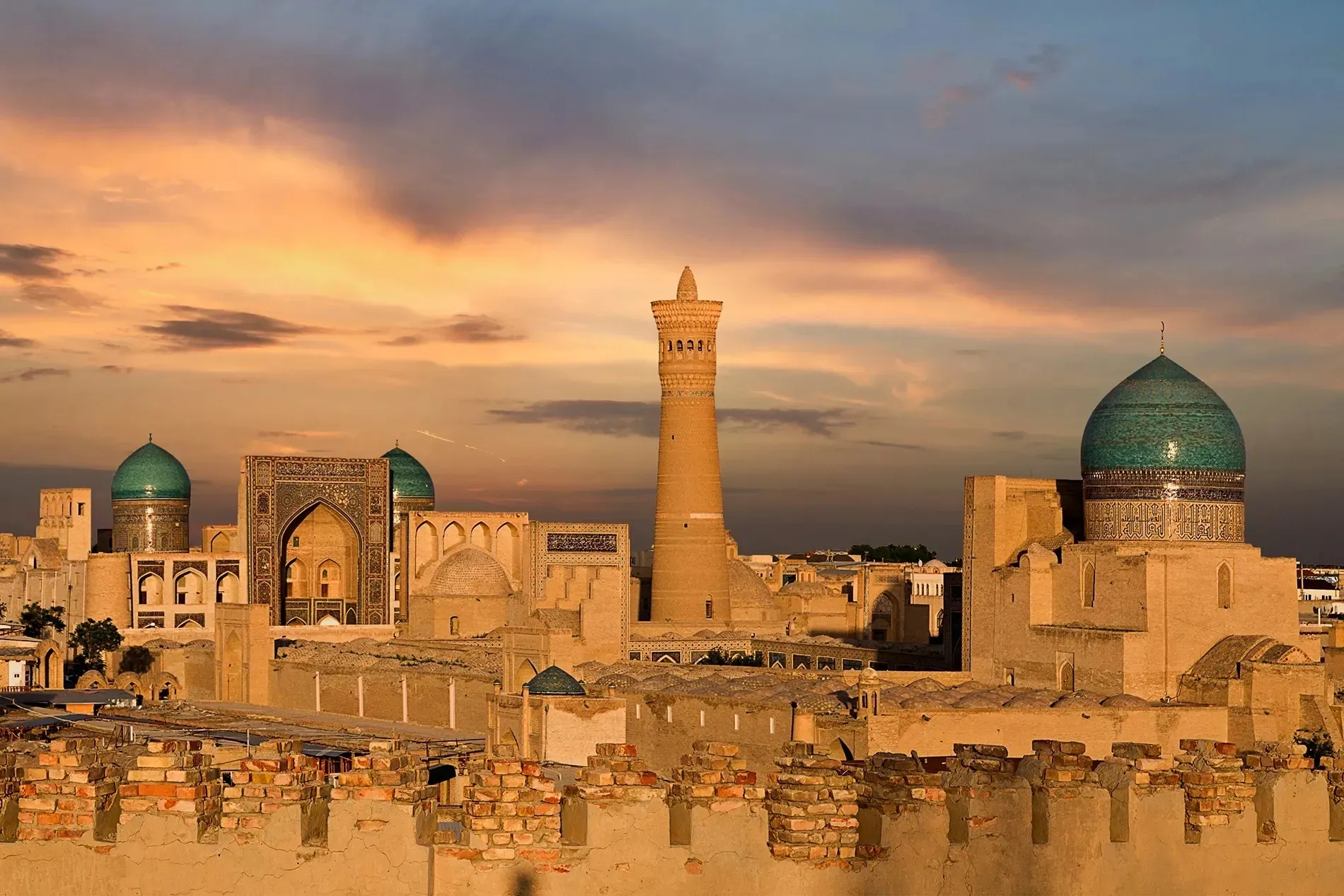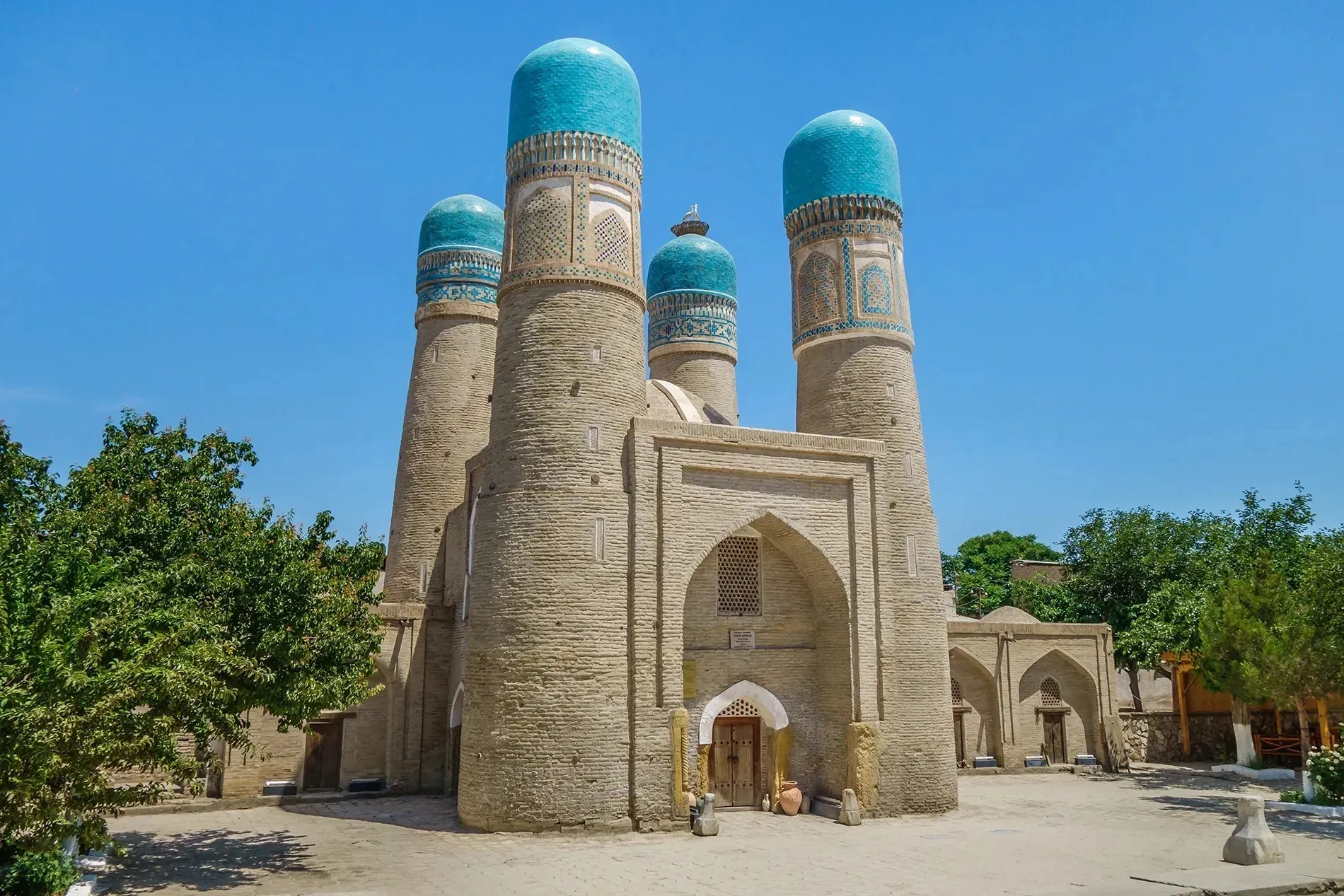Bukhara
Bukhara - The Dome of Islam
Bukhara has been making an invaluable contribution to the development of Islamic Civilization for a number of centuries. The city in the Muslim World is called the “Dome of Islam”. In 2020 Bukhara was declared as the “Capital of Islamic Culture – 2020” by the Islamic World Educational, Scientific and Cultural Organization, ICESCO.
Bukhara is one of the oldest cities in Central Asia. The history of the city dates back 2500 years. According to archaeological materials, Bukhara arose in the middle of the 1st millennium BC.
In written sources there is semi-legendary information that the founder of Bukhara is the great Turkic Kagan Afrasiyab (Alp Er Tonga). There is even a symbolic tomb of Afrasiyab in the city.
Modern Bukhara is a dynamically developing city with a population of more than 280 thousand inhabitants. The historical part of Bukhara is included in the UNESCO World Heritage List.
From the end of the 1st century BC to the middle of the 4th century AD Bukhara was part of the Turkic Kushan State. During this period, the Great Silk Road ran through Bukhara. There were many caravanserais, where merchants from India, China, Persia and other countries were accommodated.
In the 9th-10th centuries, Bukhara became the capital of the first Turkic-Islamic state of Samanids. Abu Ibn Sina, Al Bukhari, Muhammad Rudaki, Omar Khayyam, Tabari, Narshahi and other famous personalities lived and worked here.
In the 11th - the first third of the 12th centuries, the Turkic Karakhanid rulers rebuilt a number of buildings in Bukhara. During the reign of Arslan Khan, one of the masterpieces of Bukhara architecture, the Minaret Kalyan, was built. In the southwestern part of the “Inner City” was rebuilt the Juma mosque, now known as the Mosque Kalyan.
From the era of the Karakhanids, ancient monuments in the city have been preserved: the Kalyan Minaret, the Magoki-Attari and Namazgokh mosques, the mausoleums of Chashma-Ayub and Turk-i Dzhandi (a quarterly and Sufi center).
In the 12-15th century, the Bukhara oasis became one of the centers of Sufism in Central Asia. One of the famous Sufis were Abdul-Khalik Gijduvani and Bahauddin Naqshbandi.
During the Amir Temur Empire, Bukhara began to acquire the status of a religious center. City began to be called “Bukhoroi Sharif” (Holy Bukhara). One of the directions of the Great Silk Road passed through the city, connecting the countries of the Mediterranean with the Far East.
Under Mirza Ulugbek, Bukhara was enriched by the building of a new madrasah, which is now the oldest surviving one in Central Asia. This madrasah became famous thanks to the inscription written Hadith of the Prophet Muhammed (SAV) on the gate leaf which reads “The pursuit of knowledge is the duty of every Muslim man and Muslim woman”.
During the reign of the Sheibanids, Bukhara became the capital of the state. During the era of the Sheibanids, dozens of new madrasahs, mosques, caravanserais, and trading houses were built in Bukhara. At this time, scientific knowledge and cultural life developed. The city acquired its modern look. Large architectural ensembles and complexes were built, which we can admire to this day.
It is recommended to include the following information under each relevant photo:
- The ancient Ark fortress is one of the architectural symbols of Bukhara and the oldest monument of the city, which served as a defensive structure since the 4th century BC;
- Mausoleum of the Samanids - the tomb of the Samanids dynasty. The building was built at the end of the 9th - beginning of the 10th century. In 1993, the mausoleum was included to the UNESCO World Heritage List;
- Minaret Kalyan and Madrassah Miri Arab. The Kalyan Mosque is the main Juma Mosque in Bukhara;
- Lyabi-Hauz - one of the most popular places in Bukhara;
- Madrasah Kukeldash is the largest spiritual educational institution in Central Asia;
- Mausoleum of Chashma-Ayub (Chashma-Ayub) is considered a sacred place;
- Madrassah of Abdulaziz Khan is an architectural monument, which is considered as a masterpiece of Bukhara architecture of the XVI century;
- Sitorai Mokhi-Khosa Palace and Chor-Minor Madrasah, etc.








